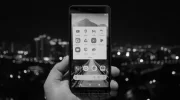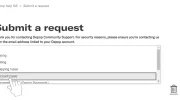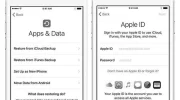The marketing landscape has always been dynamic, but in recent years, the pace of change has accelerated at an unprecedented rate. Consumer behaviour, influenced by technology, culture, and shifting global dynamics, is evolving rapidly. Brands today are not only competing for attention but also striving to foster genuine relationships with their audiences.
To succeed in this climate, creative professionals must stay ahead of emerging trends that define how people engage with products, services, and content. For digital marketers, creative directors, and agencies, understanding these trends is not optional – it is essential for crafting campaigns that resonate, inspire, and convert.
Below, we explore the top creative marketing trends that are actively reshaping consumer behaviour and redefining the future of brand-consumer relationships.
1. Personalisation Beyond Demographics
Traditional demographic targeting is no longer enough. Consumers today expect personalised experiences that consider their interests, behaviours, and context in real time.
- Hyper-personalisation uses data-driven insights to tailor campaigns at the individual level, from product recommendations to dynamic ad creatives.
- Platforms powered by AI and machine learning allow brands to predict needs, serving content that feels intuitive rather than intrusive.
The result is a stronger emotional connection. When consumers feel understood, they are more likely to trust a brand and remain loyal.
2. Immersive Experiences Through AR and VR
Augmented reality (AR) and virtual reality (VR) are transforming how consumers explore and evaluate products. From trying on clothes virtually to visualising furniture in their living rooms, immersive technologies reduce barriers to purchase.
Fashion, real estate, and retail industries have embraced AR-powered try-ons, while VR enables branded experiences that transport consumers into virtual worlds. These technologies turn passive viewers into active participants, reshaping expectations of what marketing can achieve.
For creative leaders, AR and VR provide new canvases for storytelling; mediums that demand imagination and bold experimentation.
3. Purpose-Driven Branding
Consumers, particularly younger generations, are aligning themselves with brands that reflect their values. A product’s quality and price remain important, but equally vital is a brand’s stance on issues like sustainability, inclusivity, and social impact.
Purpose-driven campaigns resonate because they show commitment beyond profit. Brands that incorporate ethical storytelling and authentic actions into their strategies foster loyalty among increasingly conscious consumers.
This shift demands that marketers move from transactional campaigns to value-driven narratives, ensuring that a brand’s creative voice reflects both integrity and responsibility.
4. Content That Feels Native, Not Forced
Consumers have grown weary of traditional advertising formats. Banner blindness, ad fatigue, and the rise of ad blockers highlight the demand for native, integrated content.
Influencer collaborations, branded podcasts, and shoppable videos are examples of marketing that fit seamlessly into a consumer’s digital journey. When done creatively, such content provides value – education, entertainment, or inspiration; rather than disruption.
For brands, the challenge lies in balancing commercial goals with genuine storytelling. Consumers reward those who create content ecosystems where marketing feels like a natural extension of the platform they are engaging with.
5. Short-Form, Snackable Storytelling
The meteoric rise of platforms like TikTok, Instagram Reels, and YouTube Shorts underscores the demand for short-form storytelling. Attention spans are shrinking, and consumers want content that is concise yet impactful.
Creative teams are now tasked with condensing complex brand narratives into 10–30 seconds without losing emotional depth. The brands that master this craft understand that brevity does not mean superficiality – it means clarity, creativity, and precision.
6. The Rise of Community-Led Marketing
Rather than relying solely on top-down messaging, brands are increasingly investing in communities where consumers can connect. Whether it’s through private forums, Discord channels, or brand-run groups on social platforms, community-led marketing builds belonging.
This trend shifts the role of marketing from broadcasting to facilitating. A consumer who feels like part of a brand’s community is not just a buyer – they become an advocate, co-creator, and long-term supporter.
For agencies and directors, designing strategies that foster community engagement is quickly becoming a key differentiator in campaign success.
7. AI as a Creative Collaborator
Artificial intelligence is no longer a back-end tool but a frontline creative partner. From generating campaign ideas to producing visual assets, AI tools are revolutionising workflows.
However, the most impactful campaigns combine AI’s efficiency with human creativity. While AI can analyse patterns and automate tasks, human insight ensures storytelling retains depth and authenticity.
Agencies positioning themselves as the best creative agency in India for forward-thinking brands understand that the future lies in integrating technology with artistry. By embracing AI thoughtfully, creative leaders can deliver campaigns that are both scalable and emotionally engaging.
8. Multi-Sensory Branding
Visuals and copy have long dominated branding, but consumers now expect multi-sensory experiences. Sound branding (think Netflix’s “ta-dum” or Intel’s jingle), tactile packaging, and even scent-based marketing are influencing purchasing behaviour.
The human brain processes sensory input holistically. Brands that engage multiple senses create stronger, more memorable impressions. This trend encourages creative managers to think beyond sight and sound, designing immersive identities that live in consumers’ minds long after an interaction ends.
9. Real-Time Engagement and Agility
The speed of digital culture requires brands to be more agile than ever. Trends, memes, and cultural moments emerge and fade within hours. The ability to react in real time with relevant, creative campaigns can significantly boost visibility and engagement.
Agility doesn’t mean abandoning long-term strategy – it means building systems flexible enough to adapt quickly. Whether it’s a witty social media post, a responsive ad campaign, or a live-streamed experience, real-time creativity is shaping how consumers perceive brand relevance.
10. Humanised Data-Driven Insights
Data-driven marketing has been a mainstay for years, but the future lies in humanised data. Consumers are increasingly concerned about privacy and transparency, which means marketers must strike a balance between personalisation and respect for boundaries.
Creative campaigns that acknowledge and respect these concerns, while still delivering tailored experiences, foster trust. Transparency around data usage is no longer optional; it is part of a brand’s creative voice.
For creative directors, this requires working closely with analytics teams to ensure data translates into insights that enhance rather than exploit the consumer experience.
The Agency Perspective
As these trends unfold, creative agencies stand at the intersection of technology, culture, and storytelling. They play a pivotal role in helping brands adopt new strategies without losing authenticity.
One notable example is Unstoppable Creative Agency, which emphasises blending innovation with consistency to create impactful consumer experiences. Agencies like these recognise that the future of marketing is not about isolated campaigns but about developing adaptable, holistic frameworks that reflect evolving consumer expectations.
Consumers = Growth
Consumer behaviour is not static – it is fluid, shaped by technological innovations, cultural shifts, and personal values. For marketers, creative directors, and agencies, the challenge is to anticipate these shifts and design strategies that resonate deeply with audiences.
The trends shaping today’s marketing – personalisation, immersive technologies, purpose-driven branding, community-led engagement, AI collaboration, and more—are not fleeting fads. There are structural changes in how people consume, interact, and relate to brands.
Those who embrace these changes proactively will not only keep pace with consumer expectations but also set the benchmarks for creativity in the years to come.









